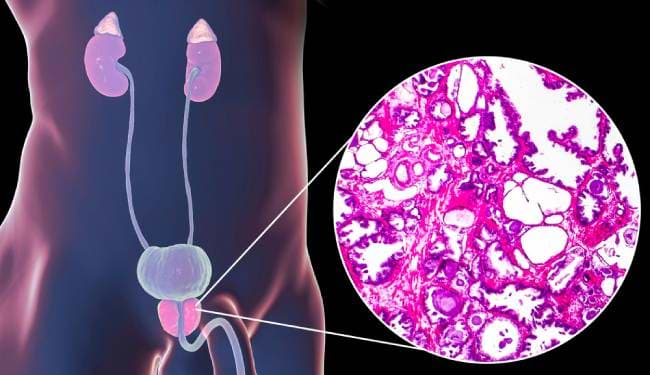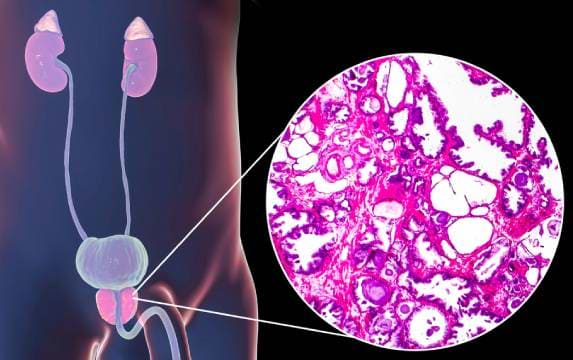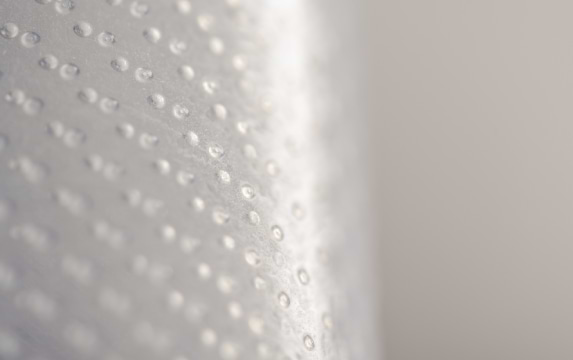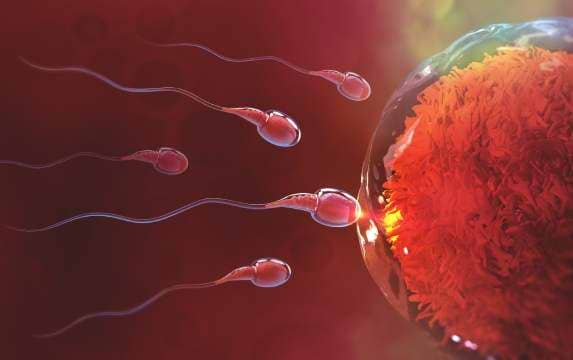In the process of aging, many will develop a condition called Benign Prostatic Hyperplasia (BPH), AKA ‘enlarged prostate’, which can cause uncomfortable urinary symptoms and affect erectile function
Prostate enlargement and erectile dysfunction (ED) are two health problems which are common in men. However, although both are strongly associated with older age, one causes problems in the bedroom while the other in the bathroom.
The prostate gland is an important part of the male reproductive system. It produces the fluid which goes into semen and contains nutrients that provide energy to sperm cells. During ejaculation, the fluid mixes with sperm and enables it to survive all the way to the egg, thus it is an essential component for male fertility. The prostate gland is located in the pelvis, just below the bladder, and it surrounds the urethra at the neck of the bladder.

What is benign prostate hyperplasia?
As men age, their prostate gland usually goes through a growth period as part of the natural aging process. From the age of 60, about 60% of the men have an enlarged prostate, while about half of them have lower urinary tract symptoms as a result. In most cases around the age of 50, the enlarged prostate starts causing problems in the urinary system, which not only undermine the quality of life but occasionally affect sexual function as well. It happens as the enlarged prostate presses against and narrows the urethra, causing problems with urine flow and other urinary problems. Consequently, the bladder wall becomes thicker and the bladder may weaken and lose its elasticity and the ability to empty completely. And if the bladder cannot void completely, remaining residual urine could lead to urinary tract infections and other complications.
Common symptoms of BPH include:
- A weak urine stream
- Frequent and urgent urination
- Needing to get up multiple times at night to urinate
- Pain during urination or after ejaculation
- Terminal dribbling (when urine dribbles slowly towards an end of urination)
These symptoms usually produce serious effects on life quality and routine of many men. Furthermore, numerous men feel that their masculinity is being undermined and this often gives rise to problems with relationships.
BPH and Erectile Dysfunction
Coping with an enlarged prostate can be even more challenging when it involves erectile dysfunction (ED), that is, the inability to achieve or maintain an erection hard enough for penetration. More than 50% of men over 40 suffer from some degree of ED, and similar BPH ED can likewise undermine the quality of life of men. The two problems share similar risk factors, such as older age, diabetes, hypertension and high blood lipids levels and many research studies have found a close connection between the two conditions.
To begin with, part of the treatments for BPH (drugs or surgery) might cause ED, ejaculation and libido problems, and on the other hand, ED drug treatment may improve BPH symptoms. Furthermore, a clinical link has been found between the two conditions while improvement in obstructive (i.e. BPH related) urinary symptoms had been directly associated with improvement in sexual function 12.
Common mechanisms of BPH and ED include:
- Atherosclerotic changes (hardening of the arteries) in the bladder and penis
- Decrease in testosterone levels – the male sex hormone which is associated with both erectile function and the intact structure and function of the urinary tract 3
- Decrease in the availability of Nitric Oxide (NO) – the molecule which is directly involved in getting an erection (ED medications also work on mechanisms related to this molecule). Decrease in the availability of NO is likewise related to the development of BPH and to urination problems. Therefore, it is possible that ED medications will prove effective for BPH
- The erect and flaccid states of the penis are dependent on the right balance between the contraction and relaxation of the smooth muscle in the erectile tissues 4. However, it has been found that different conditions of ED involve increased smooth muscle tone (i.e. enhanced contraction) which often prevents an erection. Such enhancedcontraction can similarly occur in the prostate, the bladder and the urethra and lead to urination problems, especially in older men 5.
- Nocturnal urination is a symptom of BPH which can interfere with the dreaming phase (REM sleep) during which nocturnal erections occur. Nocturnal erections are essential for the proper function of the erectile bodies and therefore REM sleep disruption might cause ED 6.
Frequent and painful urination might undermine a man’s self-confidence and consequently his sexual function 7.
Which BPH symptoms are associated with ED?
In a study which examined at this issue, the researchers studied 2,115 men between the ages of 40 and 79. The study participants completed questionnaires related to their sexual function and urinary tract symptoms every two years.
The results showed that each of the indicators of sexual function was inversely related to the severity of urinary tract symptoms reported by the participants (i.e. as the men’s urinary symptoms increased their level of sexual function decreased).
Urinary tract symptoms resulting from BPH which were most strongly associated with sexual dysfunction (i.e. ED and problems with libido, ejaculation and sexual satisfaction) were:
- A feeling of urgency
- Increased nocturnal urination
- Weak urine stream
- Straining to start urinating
The results show that there may be a common cause for BPH and ED and therefore future medical treatments which may focus on it could prove effective for treating both conditions – according to researcher Steven Jacobsen, of the Mayo Clinic College of Medicine 8.
In conclusion, most of the men with lower urinary tract symptoms resulting from BPH also suffer from erectile dysfunction problems, and the two disorders have common mechanisms and risk factors. Therefore, if you have erectile or urinary problems it is recommended to seek medical advice and treatment as soon as possible, in order to prevent symptoms’ exacerbation.
[1] Elliott SP, Gulati M, Pasta DJ, Spitalny GM, Kane CJ, Yee R et al. Obstructive lower urinary tract symptoms correlate with erectile dysfunction. Urology 2004; 63: 1148-1152.↩
[2] Ponholzer A, Temml C, Obermayr R, Madersbacher S. Association between lower urinary tract symptoms and erectile dysfunction. Urology 2004; 64: 772-776.↩
[3] Yassin AA, El-Sakka AI, Saad F, Gooren LJG. Lower urinarytract symptoms and testosterone in elderly men. World J Urol 2008; 26: 359-364.↩
[4] Andersson KE, Wagner G. Physiology of penile erection. Physiol Rev 1995; 75: 191-236.↩
[5] Christ GJ, Stone B, Melman A. Age-dependent alterations in the efficacy of phenylephrine-induced contractions in vascular smooth muscle isolated from the corpus cavernosum of impotent men. Can J PhysiolPharmacol 1991; 69: 909-913.↩
[6] Albersen M, Shindel AW, Mwamukonda KB, Lue TF. The future is today: emerging drugs for the treatment of erectile dysfunction. Expert OpinEmerg Drugs 2010; 15: 467-480.↩
[7] Frankel SJ, Donovan JL, Peters TI, Abrams P, Dabhoiwala NF, Osawa D et al. Sexual dysfunction in men with lower urinary tract symptoms. J ClinEpidemiol 1998; 51: 677-685.↩
[8] Chung, W. Mayo Clinic Proceedings, June 2004; vol 79: pp 745-749. News release↩
The Company hereby clarifies that the information contained on the website is for informational purposes only, and is not intended to be a substitute for professional medical and healthcare advice, and does not constitute medical advice or opinion. Always seek the advice of your physician or other qualified health provider with any medical condition or question you may have regarding a medical condition.





